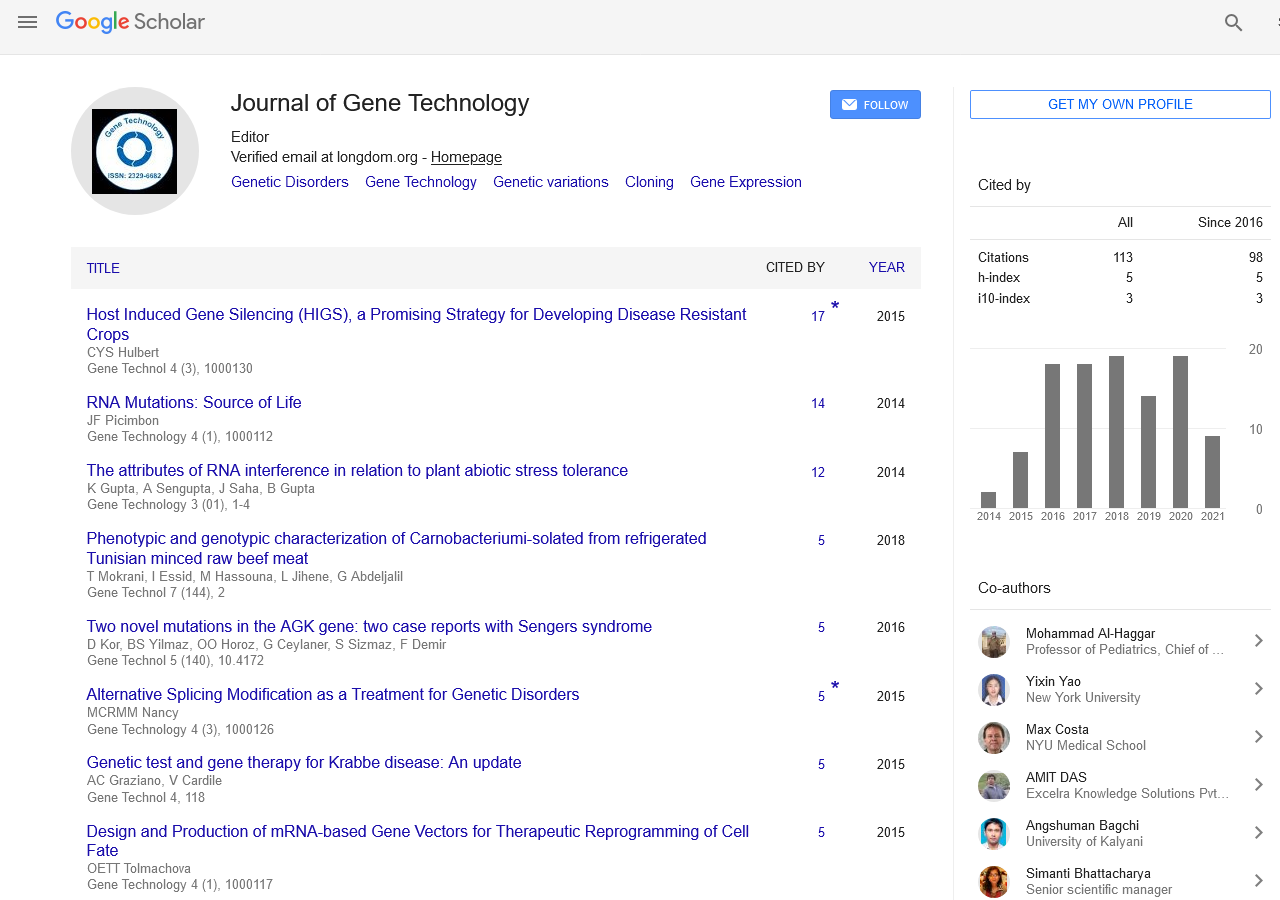PMC/PubMed Indexed Articles
Indexed In
- Academic Keys
- ResearchBible
- CiteFactor
- Access to Global Online Research in Agriculture (AGORA)
- RefSeek
- Hamdard University
- EBSCO A-Z
- OCLC- WorldCat
- Publons
- Euro Pub
- Google Scholar
Useful Links
Share This Page
Journal Flyer

Open Access Journals
- Agri and Aquaculture
- Biochemistry
- Bioinformatics & Systems Biology
- Business & Management
- Chemistry
- Clinical Sciences
- Engineering
- Food & Nutrition
- General Science
- Genetics & Molecular Biology
- Immunology & Microbiology
- Medical Sciences
- Neuroscience & Psychology
- Nursing & Health Care
- Pharmaceutical Sciences
Abstract
Utility of Adoption a Molecular Method for Diagnosis of Short Limb Dwarfism
Abdel-Rahman Eid, Mohammad Al-haggar and Islam Nour
Background and objectives: Mutation analysis in Egyptian children with clinical diagnosis of short limb dwarfism (Achondroplasia). In addition, to adopt a molecular method for both prenatal and postnatal diagnosis.
Materials and methods: Eight sporadic cases of short limb dwarfism were studied. A mutation analysis was done by PCR/RFLP (Polymerase chain reaction/Restriction fragment length polymorphism). Results of RFLP were confirmed using sequencing of PCR products.
Results: The G380R mutation was positive in all eight probands (100%) and negative in all parents (0%). Results of RFLP were confirmed using sequencing that revealed substitution of guanine by adenine at the nucleotide (nt. 1138).
Interpretation and conclusions: All cases had the G-A transition at nt. 1138 of the FGFR3 gene. Our conclusion is that vast majority of Egyptian achondroplasia patients have the same mutation. Mutation analysis is useful for both prenatal and postnatal diagnosis.


